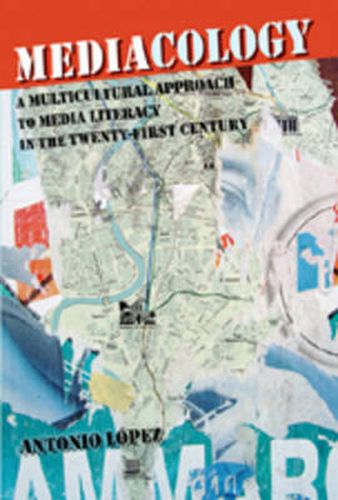Readings Newsletter
Become a Readings Member to make your shopping experience even easier.
Sign in or sign up for free!
You’re not far away from qualifying for FREE standard shipping within Australia
You’ve qualified for FREE standard shipping within Australia
The cart is loading…






Traditional media literacy models are mostly left-brained, inherited from the legacy of alphabetic literacy, the Gutenberg press revolution, and industrial mass media production. New digital media radically alter the environment: their nonlinear, multisensory, field-like properties are more right-brain oriented. Consequently, rather than focus exclusively on deconstructing the products of design objects (such as an advertisement text ), digital learning should respond to the design of the system itself, including cultural and cognitive bias.
Mediacology proposes a design-for-pattern approach called media permaculture , which restructures media literacy to be in sync with new media practices connected with sustainability and the perceptual functions of the right brain hemisphere. In the same way that permaculture approaches gardening by establishing the natural parameters of its ecological niche, media permaculture explores the individual’s mediacological niche in the context of knowledge communities. By applying bioregional thinking to the symbolic order, media permaculture redresses the standard one-size-fits-all literacy model by taking into account diverse cognitive strategies and emerging convergence media practices. Antonio Lopez applies a practical knowledge of alternative media, cross-cultural communication, and ecology to build a meaningful theory of media education.
$9.00 standard shipping within Australia
FREE standard shipping within Australia for orders over $100.00
Express & International shipping calculated at checkout
Traditional media literacy models are mostly left-brained, inherited from the legacy of alphabetic literacy, the Gutenberg press revolution, and industrial mass media production. New digital media radically alter the environment: their nonlinear, multisensory, field-like properties are more right-brain oriented. Consequently, rather than focus exclusively on deconstructing the products of design objects (such as an advertisement text ), digital learning should respond to the design of the system itself, including cultural and cognitive bias.
Mediacology proposes a design-for-pattern approach called media permaculture , which restructures media literacy to be in sync with new media practices connected with sustainability and the perceptual functions of the right brain hemisphere. In the same way that permaculture approaches gardening by establishing the natural parameters of its ecological niche, media permaculture explores the individual’s mediacological niche in the context of knowledge communities. By applying bioregional thinking to the symbolic order, media permaculture redresses the standard one-size-fits-all literacy model by taking into account diverse cognitive strategies and emerging convergence media practices. Antonio Lopez applies a practical knowledge of alternative media, cross-cultural communication, and ecology to build a meaningful theory of media education.